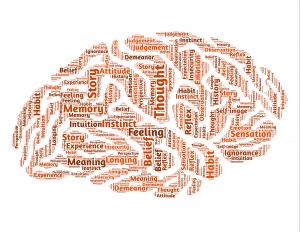2 Activity 2: Individual Vs. Collective Mindset

Estimated time: 30 minutes
Objectives:
Students will be able to:
- Identify their existing views about education and how those views are influenced by their cultures of origin and the mainstream culture
- Compare their beliefs to those of other cultures
- Interview other students to discover differences and similarities in personal and cultural perspectives
Materials
- What do you believe about education? Assessment
- Power Distance Index from Hofstede (2019, p. 309)
Vocabulary
- Collectivism
- Ethnocentrism
- Objective
Activity
Part 1: What do you believe about education?
- Our culture influences our beliefs in ways that are sometimes invisible to us. We sometimes call this ethnocentrism.
- Ethno means “nation” or “people”
- centrism (as you may have guessed) means “centered”
- Ethnocentrism becomes a problem when we try to communicate with other people. We may assume that what is normal for us is normal for everyone. As we meet, work, and go to school with people from many backgrounds, these expectations may lead to misunderstandings or hurt feelings.
- For example, some cultures place a high value on being punctual and consider lateness to be rude. In other cultures, being 30 to 60 minutes late to a business meeting is normal, and apologizing for being late would never occur to people in those cultures. If you are meeting with people from another culture, you should know each other’s expectations so you don’t offend or become offended.
- Take What do you believe about education? Assessment.
What do you believe about education? Assessment
Answer these questions by circling the number that matches what you believe.
1 = I don’t believe this at all
5 = This is exactly what I believe
- I feel uncomfortable giving my teachers feedback on how to teach the course.
1 2 3 4 5 - I have a lot of respect for teachers. People in my culture think teachers are valuable and important.
1 2 3 4 5 - Class time is best spent listening to the teacher and learning from their expertise.
1 2 3 4 5 - I would be uncomfortable calling my teacher by their first name.
1 2 3 4 5 - Tradition is very important to me.
1 2 3 4 5 - Giving a wrong answer or having a mistake pointed out in front of the class would be very embarrassing.
1 2 3 4 5 - Education is something you do when you are young. When you are older, your job is to work and/or teach.
1 2 3 4 5 - If I have a disagreement with a student or the teacher, I would be very uncomfortable confronting them.
1 2 3 4 5
Part 2: What does the class believe about education?
- Calculate your average score for questions 1-4. Plot each student’s answer on a number line.
- Questions 1-4 measure your Power Distance
- Cultures with small power distances are more informal. Teachers guide students, but students are able to contest answers and even discover their own versions of the truth.
- Cultures with large power distances are more formal. Teachers are considered experts and teach the objective truth to their students.
- Calculate your average score for questions 5-8. Plot each student’s answer on a number line.
- Questions 5-8 measure your Collectivism vs. Individualism
- Collectivist societies place high value on tradition and value social harmony.
- Individualistic societies place high value on innovation and value individual success and standing out.
- Compare to other cultures
- View Hofstede’s (1986) Power Distance Index (p. 309). Notice where different countries fall on the Individualism and Power Distance indexes.
- What patterns do you notice? (for example: many northern European countries have small power distance, high individualism.)
- Do these patterns match those of the students in class? Do your answers match those of people from your culture of origin?
- How do members of the class compare? Are there big differences in the beliefs of class members, or are the scores fairly close together?
Part 3: How do we apply this to our class?
- Interview three other students. Find out:
- One feature of the student’s home culture (for example, large power distance, low individualism, etc.)
- One thing from the student’s home culture that is different from U.S./the dominant culture
- Share the results of the interviews in class
- What can we do to make the class work for everyone?
- For example, there may be students who are very concerned with saving face and not being embarrassed in class. What can we do to make those students comfortable?
- Speaking up in class is very typical in Western cultures. How can a Western teacher expect student participation in a way that’s fair to everyone?
Instructor: depending on the students’ preferences for class participation, you may have a group discussion, have students discuss in small groups and share, or ask them to write the answers and hand them in. You most likely have your own procedures and viewpoints on managing multiple cultures. After the class has shared their ideas, share your viewpoints and comment on their suggestions.
Hofstede, G. (1986). Cultural differences in teaching and learning. International Journal of Intercultural Relations, 10(3), 301–320. doi: 10.1016/0147-1767(86)90015-5

